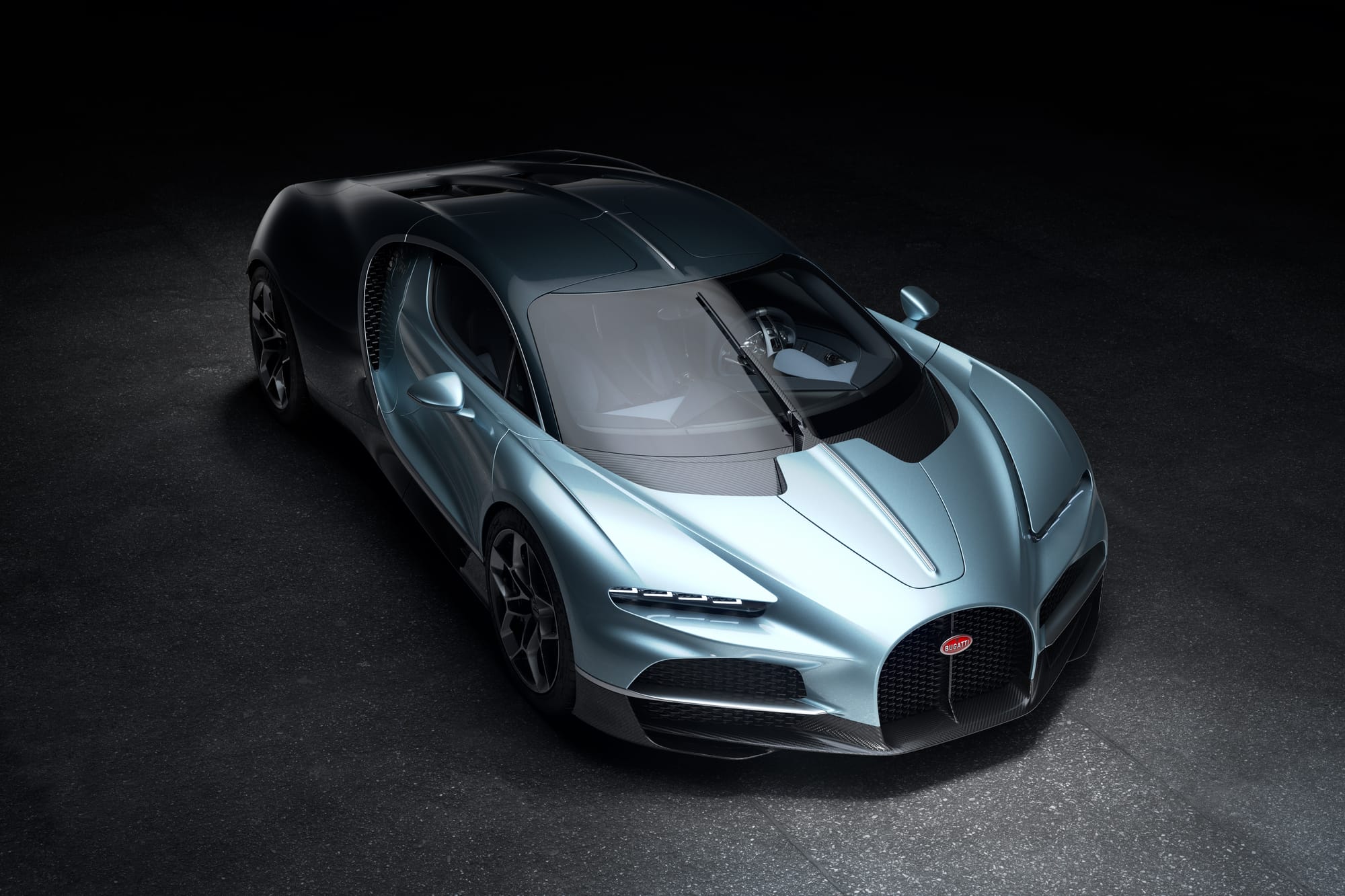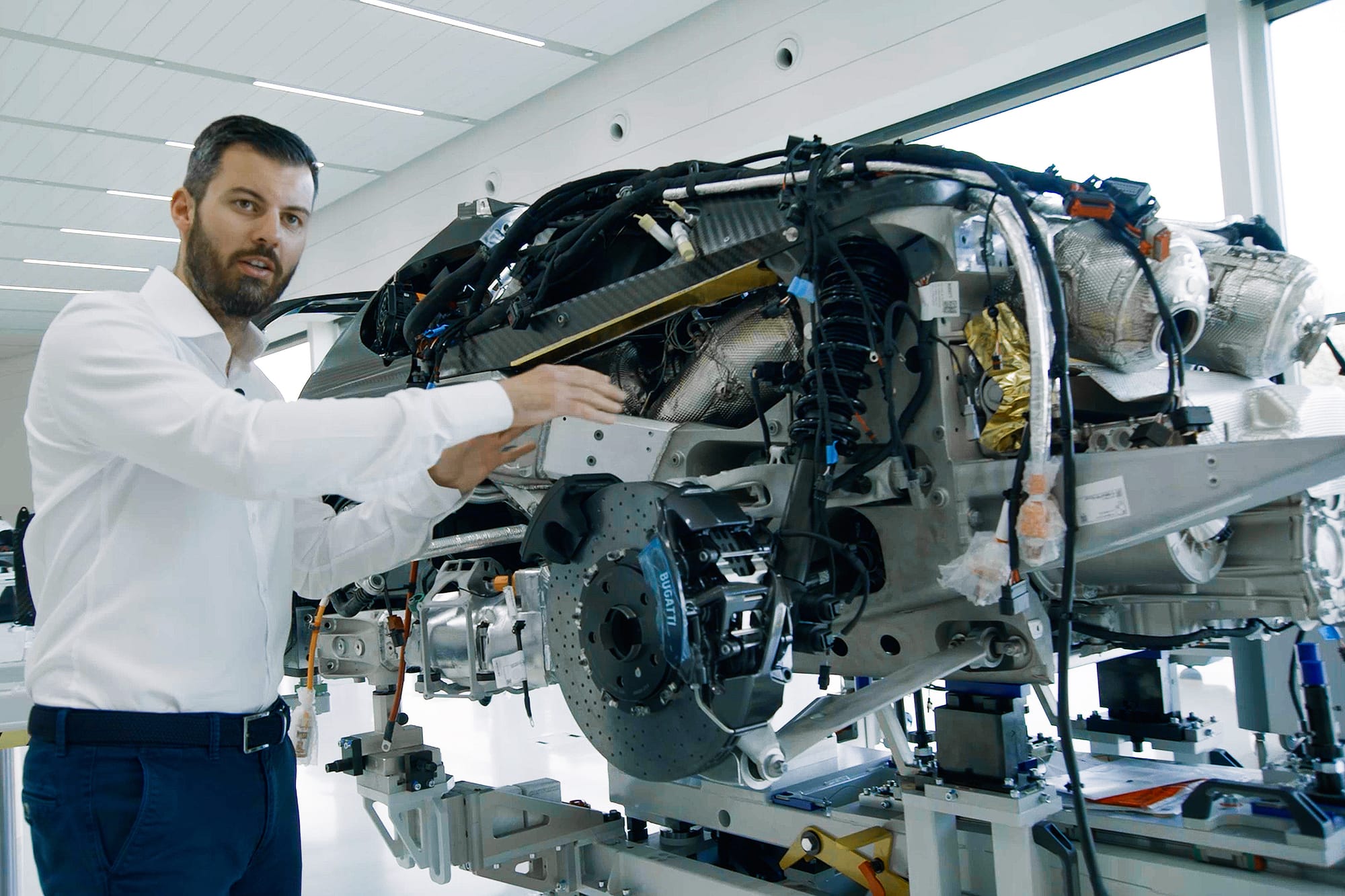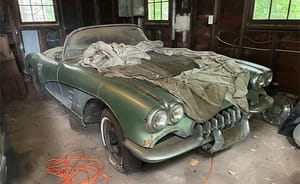Bugatti’s latest hypercar, the Tourbillon, marks a turning point in how the brand approaches performance and design. Episode 9 of Bugatti: A New Era, the company’s documentary series, delves into how thoughtful packaging shaped the Tourbillon’s unprecedented balance of power, aerodynamics, and efficiency.

At the center of this transformation is a new V16 engine, replacing the W16 found in previous models. The longer, narrower engine sits at an angle, a subtle adjustment that creates room for super-long Venturi tunnels beneath the car. These tunnels run nearly halfway down the vehicle and are key to generating downforce from below rather than relying solely on visible aerodynamic aids like wings.
This setup allows the Tourbillon to achieve its top speed without deploying the rear wing, improving efficiency by reducing drag. The gearbox’s position behind the engine, instead of in front, further supports this redesign. Dual electric motors power the front axle independently, eliminating any mechanical link between the front and rear powertrains. A compact battery sits between them, balancing weight and improving packaging.

Bugatti’s engineers also trimmed the car’s frontal area, an essential step for meeting the Chiron’s lofty performance benchmarks. The signature horseshoe grille remains a focal point, now doubling as a critical cooling interface. Air entering through the grille cools the front electric axle, brakes, and battery before flowing to the combustion engine’s radiators on either side.
At the rear, the diffuser doubles as a safety structure. Two 3D-printed metal elements within it absorb crash energy—an example of how every part serves multiple purposes. Even the suspension arms are aerodynamic, created using 3D printing and AI optimization to remove excess material while retaining strength.
From its angled engine to its skeletal, AI-sculpted components, the Tourbillon embodies Bugatti’s philosophy of total integration—where form, function, and artistry unite to push hypercar engineering into a new era.
Source





